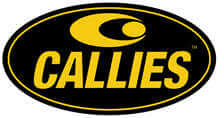
MS Access As A Dev Tool
Access continues to be a highly efficient tool for business database development.
Don't let a broken database ruin your business. We repair broken databases, program
custom Microsoft Access databases, convert Excel to Access, and upgrade old Access
databases to the latest version. Call (323) 285-0939 now for a FREE consultation.
The Best Microsoft Access Database Solutions owner, consultant, and principal programmer is Alison Balter - a recognized expert Microsoft Access consultant. Alison is the author of 15 Microsoft Access training books and videos. She is a frequent guest speaker at MS Access conferences and has developed hundreds of applications for businesses of all types.
We know your business data is important; we listen to your concerns, ask questions, and gather information from all stake holders. We discuss your needs and requirements for your database. We find out what you want, why you need various features so we can obtain as much information as possible. Once we have the information we need, we work with you to design the proper database architecture, plus the dashboards, the questions (queries), forms, and reports you need for an excellent database system.

We also create websites designed for speed to display your data accurately, using ASP.NET technology. Fast, secure, and robust, our ASP.NET web sites and web applications give you true business tool for finding and displaying information dynamically on the web.






Access continues to be a highly efficient tool for business database development.

How to create a Microsoft Access application with some unique tips and tricks.

Your Access developer near me has some great info for you about using Access efficiently.
Call MS Access Solutions at (323)285-0939 For Complimentary Consultation
The material below originally appeared in Alison Balter's book Mastering Microsoft Office Access 2007 Development. and is reprinted here with the author's permission. There may be references to "Figures" or "Chapters"that are not reprintable and are not used on this page.
Microsoft celebrated the fifteenth anniversary of Microsoft Access by releasing Version 2007. As one of the major updates, Microsoft separated out each type of view as an additional property for the form. Allow Form View specifies whether the user is permitted to switch to the Form view of a form.
The preceding material originally appeared in Alison Balter's book Mastering Microsoft Office Access 2007 Development and is reprinted here with the author's permission.
Do you need an expert Microsoft Access programmer for your Baltimore, Maryland business database? If the answer is "YES" then call MS Access Solutions at (323)285-0939. With over 25 years as full-time Microsoft Access programmers, we've developed database applications for a wide range of market sectors, including medical clinics and hospitals, government agencies, U.S. military, school districts, junior colleges, and universities, landscaping and agriculture, human resources departments and head-hunter companies, and insurance companies. Our expertise covers advanced Microsoft Access and SQL Server database programming, tailored to meet your business needs.
We also provide the following services:
Find out more about our programming services on the Microsoft Access Programmer Detroit, Michigan web page.
Large Address Aware support in the 32-bit edition raises available memory from 2 GB to 4 GB when running on 64-bit Windows, which reduces out of memory errors during imports, long reports, and complex joins. This is a practical gain for teams that still deploy 32-bit Office because of add-ins or legacy systems.
Code signing is now available directly in the VBA editor, through Tools, Digital Signature. Signed databases run under strict Trust Center settings, which helps in locked down environments where unsigned macros are blocked. Teams that publish ACCDE front ends on a schedule will find this saves time during each release.
Opening a query directly in SQL View from the Navigation Pane cuts steps during daily work. Right click a query, choose SQL View, edit the statement, and move on. You no longer need to open Datasheet or Design View first.
Designing linked tables is less intrusive. When you open a linked table in Design View, you can choose Do not show this message again, then restore confirmations later in File, Options, Client Settings.
Access raises internal limits. Open tables increase from 2,048 to 4,096, and available connections rise from 256 to 512 in Microsoft 365 builds. This gives headroom for apps with many linked sources, automation tasks, or heavy reporting windows.
Dataverse connectivity arrives as a built in connector. You can keep an Access front end and work with data that lives in the Power Platform, including scenarios tied to Teams. This opens up mixed environments where some lists and workflows sit in Dataverse while line of business forms stay in Access.
The Microsoft Edge Browser Control replaces the legacy WebBrowser engine. Forms can display modern web content, dashboards, or internal pages that require current standards.
Licensing and support planning are clearer. Office LTSC 2024, which includes Access 2024, follows a fixed lifecycle with mainstream support through October 9, 2029. That window helps IT plan deployments, pilot waves, and version pinning for regulated teams.

